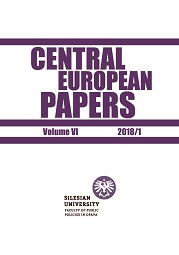Gesellschaftlicher Widerstand: die wirtschaftlichen und politischen Streiks in Polen und im oberschlesischen Industriebezirk nach dem Zweiten Weltkrieg (1944–1970)
Social resistance: economic and political strikes in the Upper Silesian industrial district after the Second World War (1944–1970)
Author(s): Ryszard Kaczmarek, Kazimierz MiroszewskiSubject(s): History, WW II and following years (1940 - 1949), Post-War period (1950 - 1989)
Published by: Slezská univerzita v Opavě, Fakulta veřejných politik
Keywords: Upper Silesia; strike; social resistance; Polish People’s Republic; Edward Gierek
Summary/Abstract: The backgrounds of workers strikes in the Polish communist era varied, depending on which historical period they were taking place in. In Upper Silesia, their specificity was additionally more acute due the heavy industry concentration in the region and vast numbers of workers. In Polish historiography of the post-1945 era it has become quite common to treat the strikes almost solely as elements of social resistance against the powers that be. What has frequently been overlooked is that social resistance is a broader phenomenon, as a rule defined as any spontaneous, unorganized and unguided protest against an imposed political and/or ideological order, usually bound up with defence of traditional values. Strikes constitute but one part of such protests; what is more, only a segment of them was of a political nature. The authors of the present article analyse the impact that workers strikes which had occurred in Poland’s largest industrial region exerted on the situation of the Polish People’s Republic (PRL).During the 1940s and at the beginning of the 1950s the Upper Silesian industrial region (Polish: GOP) was the centre of the resistance movement. The year 1956, when a special system of privileges and incentives was put forth for workers in the heavy industry sector, marked the end of social strikes in Upper Silesia for nearly two decades, in contrast to what was happening at the time in other parts of Poland. The system is now popularly identified with the figure of Edward Gierek, who was the first secretary of the Polish United Workers’ Party. Gierek’s system can be compared to the Hungarian Kadarism or the GDR model proposed by Erich Honecker which proved quite effective up until the 1980s. Gierek’s model of rule in Upper Silesia differed from governmental strategies in force in other parts of Poland, where due to both a lack of financial means and political willpower it was not possible to build a veritable ‘welfare state’. It was only the 1980 events on the Polish coast that ignited the workers strikes in Upper Silesia and its coal mines and ironworks, quickly spreading to most of industrial plants in the region. Considering the significance of the Upper Silesian industrial region for the whole of Poland, without these Silesian strikes the 1980 success of Solidarity would not have been possible.
Journal: Central European Papers
- Issue Year: 6/2018
- Issue No: 1
- Page Range: 37-57
- Page Count: 21
- Language: German

